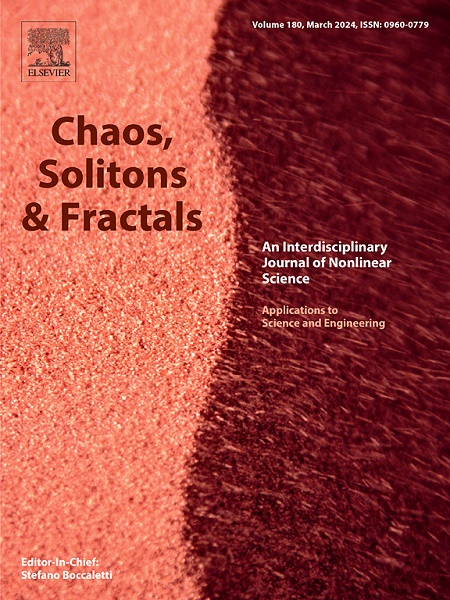A complex network approach to identifying and characterizing vital voids in the particle packing of caved ore and rock
IF 5.6
1区 数学
Q1 MATHEMATICS, INTERDISCIPLINARY APPLICATIONS
引用次数: 0
Abstract
The particle packing system of caved ore and rock can be characterized as a complex system consisting of both a particle phase and a void phase. This paper focuses primarily on the void network as the main subject of research. After analyzing the statistical characteristics of both voids and throats, we employ a complex network approach to identify vital voids. Furthermore, we investigate the geometric characteristics, spatial distribution, and connectivity of vital voids. The results indicate that: (1) The distributions of void radius and throat radius, which are influenced by varying particle gradation and void rate, conform to a Gaussian distribution. In contrast, the distribution of the void shape factor displays a long-tail distribution. (2) The void network present adheres to a scale-free network model that exhibits small-world characteristics. Additionally, vital voids are characterized by a large average size, elevated Closeness centrality, and a low Clustering coefficient. (3) There exists a strong positive correlation between the Betweenness centrality of vital voids and void radius, Degree, and shape factor. In contrast, the Clustering coefficient exhibits a negative correlation with Betweenness centrality, void radius, Degree, and shape factor, while the correlation between Closeness centrality and each of these indices is relatively weak.
一种复杂的网络方法来识别和表征垮落矿和岩石颗粒充填中的重要空隙
垮落矿和岩石的颗粒充填系统是一个由颗粒相和空隙相组成的复杂系统。本文主要以空洞网络为主要研究对象。在分析了空洞和喉道的统计特征后,我们采用复杂的网络方法来识别重要的空洞。此外,我们还研究了重要空洞的几何特征、空间分布和连通性。结果表明:(1)孔隙半径和喉道半径的分布服从高斯分布,受颗粒级配和孔隙率的影响;而孔隙形状因子的分布则呈长尾分布。(2)空洞网络呈现无标度网络模型,具有小世界特征。此外,重要空洞的特征是平均尺寸大,接近中心性高,聚类系数低。(3)重要孔洞的中间度与孔洞半径、度、形状因子存在较强的正相关关系。聚类系数与中间度(betweness)中心性、空隙半径(void radius)、度(Degree)和形状因子(shape factor)呈负相关,而与亲近度(Closeness)中心性的相关性较弱。
本文章由计算机程序翻译,如有差异,请以英文原文为准。
求助全文
约1分钟内获得全文
求助全文
来源期刊

Chaos Solitons & Fractals
物理-数学跨学科应用
CiteScore
13.20
自引率
10.30%
发文量
1087
审稿时长
9 months
期刊介绍:
Chaos, Solitons & Fractals strives to establish itself as a premier journal in the interdisciplinary realm of Nonlinear Science, Non-equilibrium, and Complex Phenomena. It welcomes submissions covering a broad spectrum of topics within this field, including dynamics, non-equilibrium processes in physics, chemistry, and geophysics, complex matter and networks, mathematical models, computational biology, applications to quantum and mesoscopic phenomena, fluctuations and random processes, self-organization, and social phenomena.
 求助内容:
求助内容: 应助结果提醒方式:
应助结果提醒方式:


